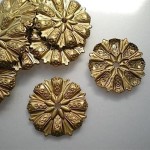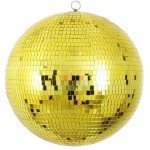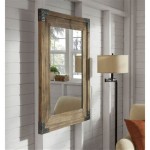Do Convex Mirrors Make Things Smaller?
Convex mirrors possess a distinctive curved surface that bulges outward, unlike concave mirrors that curve inward. This outward curvature gives rise to a unique set of optical properties that influence how images are formed and perceived. One common observation about convex mirrors is that objects reflected in them appear smaller than their actual size. This phenomenon isn't an illusion but a direct consequence of the way light rays interact with the mirror's surface.
When light rays from an object strike the outward-curving surface of a convex mirror, they are reflected outwards, diverging away from each other. These diverging rays do not converge to form a real image in front of the mirror as they would with a concave mirror. Instead, the reflected rays appear to originate from a point behind the mirror. This point is called the virtual focal point, and the image formed is a virtual image.
Virtual images are characterized by the fact that they cannot be projected onto a screen. They appear to exist behind the mirror's surface and are always upright and diminished in size compared to the actual object. This reduction in size is a direct result of the diverging reflected rays. As these rays spread out, the image they form appears smaller the further they travel from the mirror.
The relationship between the object's distance, the image's distance, and the focal length of a convex mirror is governed by the mirror equation: 1/f = 1/do + 1/di. Here, 'f' represents the focal length (which is negative for convex mirrors), 'do' represents the object distance, and 'di' represents the image distance (which is also negative for virtual images). This equation demonstrates the inverse relationship between the image distance and the object distance. As the object moves closer to the mirror, the virtual image also moves closer to the mirror's surface, albeit at a slower rate, and appears slightly larger. Conversely, as the object moves further away, the virtual image recedes further behind the mirror and appears smaller.
The magnification factor (M) of a convex mirror quantifies the size difference between the image and the object. It is defined as the ratio of the image height (hi) to the object height (ho) and can also be expressed in terms of the image distance and object distance: M = -di/do. Since the image distance is always negative for convex mirrors, the magnification factor is always positive and less than 1. This mathematically confirms that the image formed by a convex mirror is always smaller than the object.
The diminished image size in convex mirrors offers several practical advantages. The most notable is the wider field of view they provide compared to plane mirrors or concave mirrors. Because the reflected rays diverge outwards, a convex mirror can reflect light from a larger area, allowing the observer to see a broader scene. This characteristic is particularly useful in applications like security mirrors in stores, rearview mirrors in vehicles, and at blind corners on roads.
In vehicle rearview mirrors, the convex shape allows the driver to see a wider area of the road behind them, including vehicles in adjacent lanes, which would not be visible in a plane mirror. The smaller image size is a trade-off for this increased field of view. Drivers learn to compensate for the smaller image size and judge distances accordingly.
Security mirrors in stores utilize the same principle. The wider field of view allows store personnel to monitor a larger area of the store, deterring shoplifting and enhancing overall security. The smaller image size, again, is a compromise for the increased surveillance coverage.
Convex mirrors also find applications in telescopes, particularly in Cassegrain telescopes. This telescope design uses a convex secondary mirror to reflect and focus the light gathered by the primary concave mirror. The convex mirror's role is to enlarge the focal length of the system, leading to a more magnified image.
Beyond these applications, convex mirrors are used in a variety of other contexts, including streetlight reflectors, magnifying glasses (when used in a specific configuration), and even in some types of optical illusions. The characteristic diminished image size, coupled with the wider field of view, makes convex mirrors a versatile tool in optics and everyday life.
It's important to distinguish the effect of a convex mirror from simple perspective. While objects further away generally appear smaller due to perspective, the shrinking effect of a convex mirror is an optical phenomenon related to the mirror's curvature and how it reflects light. This shrinking effect is consistent regardless of the observer's distance from the mirror. The image will always appear smaller than the actual object, even if the observer moves closer to or further away from the mirror itself.
How Do Reflections From Convex Mirrors Make Objects Appear Smaller Quora

Convex Mirrors And Objects Larger Than The Mirror

Convex Mirrors And Objects Larger Than The Mirror
Objects In The Mirror Are Actually Images Article Khan Academy
Objects In The Mirror Are Actually Images Article Khan Academy
Why Does The Car Side Mirror Display Objects Appear Further Than They Are Not Just Make As Quora

Why Objects In The Mirror Are Closer Than They Appear Science Abc

Does A Convex Mirror Make Things Bigger House Caravan
How Do Reflections From Convex Mirrors Make Objects Appear Smaller Quora

Convex Mirrors And Objects Larger Than The Mirror








